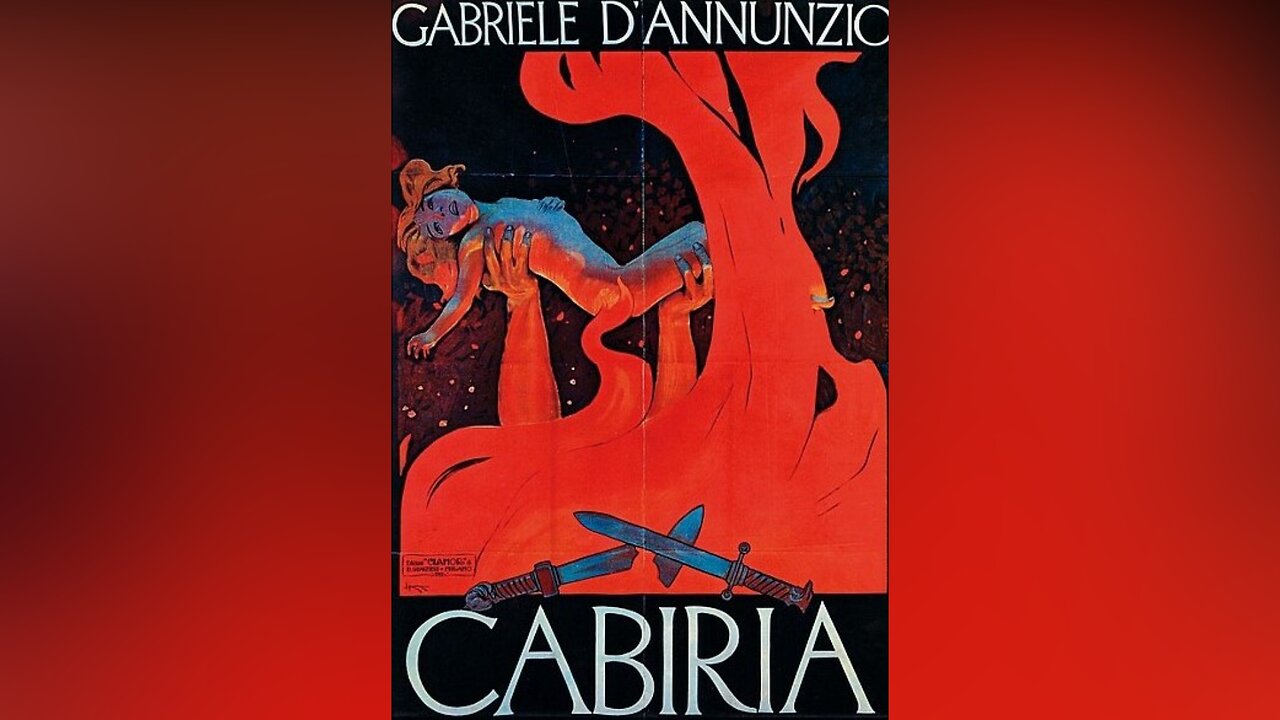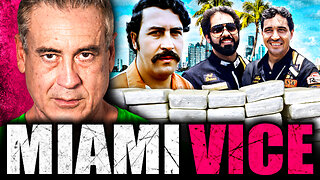Premium Only Content

Cabiria (Epic Silent Movie 1914)
Cabiria - Visione storica del terzo secolo a.C.' is a 1914 Italian epic silent film, directed by Giovanni Pastrone and shot in Turin. Some scenes were also filmed in Tunisia, Sicily, the Alps (in the Lanzo Valleys, where Hannibal was said to have passed) and the lakes of Avigliana. The original version was color toned in twelve different shades, some unpublished. The film is considered the greatest blockbuster and the most famous Italian silent film. It was also the first film in history to be screened at the White House.
The film is set in ancient Sicily, Carthage, and Cirta during the period of the Second Punic War (218–202 BC). It follows a melodramatic main plot about an abducted little girl, Cabiria, and features an eruption of Mount Etna, heinous religious rituals in Carthage, the alpine trek of Hannibal, Archimedes' defeat of the Roman fleet at the Siege of Syracuse and Scipio maneuvering in North Africa. Apart from being a classic on its own terms, the film is also notable for being the first film in which the long-running film character Maciste makes his debut. According to Martin Scorsese, in this work Pastrone invented the epic movie and deserves credit for many of the innovations often attributed to D.W. Griffith and Cecil B. DeMille. Among those was the extensive use of a moving camera, thus freeing the feature-length narrative film from "static gaze".
The historical background and characters in the story are taken from Livy's Ab Urbe Condita (written ca. 27–25 BC). In addition, the script of Cabiria was partially based on Gustave Flaubert's 1862 novel Salammbo and Emilio Salgari's 1908 novel Cartagine in fiamme (Carthage in Flames). Italian author Gabriele d'Annunzio contributed to the screenplay, writing all of the intertitles, naming the characters and the movie itself. It was D'Annunzio who came up with the name "Cabiria", "born from fire", and wanted it as the title of the film, as the name of the protagonist that the god Moloch wants to sacrifice.
During the making of Cabiria, it was Gabriele d'Annunzio and the director Giovanni Pastrone, who wanted music expressly composed for the accompaniment to be made for the first time in the history of cinema. sound of a film. For the music, Pastrone asked for the collaboration of maestro Ildebrando Pizzetti, who however couldn't complete the sound commentary for the film, which was later completed by one of his pupils, the composer Manlio Mazza. He reworked the music of several composers including Mozart, Mendelssohn, Spontini, Donizetti and Gluck. However, Pizzetti's short but intense Symphony of Fire, was used in the scenes of sacrifice.
Much of the success of Cabiria is due to the Spanish Segundo de Chomón, one of the best cinema operators on the European scene, to whom Pastrone entrusted the photography of the film and who employed a vast series of cinematographic effects: it was he who used electric lamps to obtain chiaroscuro effects (for example in the scene of the sacrifice) and who concocted the sequence of the eruption of Etna, of remarkable realism. Cabiria was a very ambitious film, one of the very first colossals, which intended to link the theatrical tradition, painting, music, literature. These characteristics were the basis of the approach of the best Italian cinema, in contrast with the fast and linear narration soon imposed by the American Griffith.
The plot of the film is very traditional, with various events leading to a happy ending, according to the canons of the 19th century historical novel. In reality it seems to be a simple pretext for staging a grandiose visionary spectacle, as the subtitle also suggests, which speaks of a "vision" of the third century BC, not of a story: in this sense Cabiria is still included in the films of the early years of the cinema, where the visual component still prevailed over the narrative structure, the so-called cinema of attractions. However, the style is profoundly different from the typical examples of the attractions period, and in this Cabiria was a cornerstone of the nascent cinematic language. Some critics see Cabiria as the first example of complete cinematic language. However, speaking of narrative cinema for Cabiria would still be premature: the visionary component is still too strong and must therefore be placed in a transitional phase. Pastrone's hallucinations will then be taken up by avant-garde silent cinema, with a citation for example in Metropolis by Fritz Lang (1927). The American director David W. Griffith paid homage to Cabiria and historical Italian cinema in the Babylonian episode of Intolerance. The copy of the statue of the god Moloch is now kept in the National Museum of Cinema in Turin. Even the works of Cecil B. DeMille owe much to the progenitor of the peplum, Pastrone.
-
 5:17
5:17
Adaneth - Cinema&TV
1 month agoYes, Minister - Overview
296 -
 1:32
1:32
Gaming on Rumble
2 days agoWhat is the Rumble Creator Program?!?! | Lvl UP
61K4 -
 10:34:09
10:34:09
Rallied
15 hours ago $19.95 earnedSolo Challenges ALL DAY
263K9 -
 1:39:43
1:39:43
Brandon Gentile
2 days agoTOP Money Expert: Bitcoin Will Keep Setting All-Time Highs Beyond $10m
17.2K1 -
 2:02:28
2:02:28
Badlands Media
1 day agoDevolution Power Hour Ep. 385: Trump “Death” Hoax, Supreme Court Tariffs Fight, and Tech-Military Ops
71.2K32 -
 1:56:48
1:56:48
Tundra Tactical
8 hours ago $15.33 earnedFull Semi-Auto Comedy Hour
39.5K3 -
 2:07:31
2:07:31
The Connect: With Johnny Mitchell
18 hours ago $10.74 earnedSecrets Of The Cocaine Cowboys: Miami Drug Lord Reveals Truth About His BILLION-DOLLAR Coke Empire
35.9K5 -
 1:55:52
1:55:52
BlackDiamondGunsandGear
1 day agoGlocks Want Gun Control? // Trump Tramples on your Rights? // After Hours Armory
33.5K4 -
 1:55:52
1:55:52
DLDAfterDark
13 hours ago $5.54 earnedDLD Live! Trump - Flag Burning - Glock & Gun Control - Martial Law Light?? - After Hours Armory
27.1K4 -
 13:46:18
13:46:18
GritsGG
19 hours agoRumble Customs! 3515 Ws! 🫡!
96.2K